Database descriptions, statistical standards (resolutions and guidelines), and guides and manuals – all the metadata to better understand the labour statistics presented on ILOSTAT.

Assessing the current state of the global labour market: Implications for achieving the Global Goals
The Sustainable Development Goals (SDGs) are a set of 17 global goals to end poverty, protect the planet, and ensure prosperity for all. But with the COVID-19 pandemic upending the global labour market in recent years, progress towards achieving these goals has been disrupted. From rising unemployment and informal work to slowing productivity growth and persistent gender inequalities, the pandemic has highlighted the need for urgent action to build a more resilient and equitable world of work.

COVID-19 and the Sustainable Development Goals: Reversing progress towards decent work for all
The pandemic wreaked havoc on people’s lives and societies, but how far did it set the global community back in reaching the SDG targets related to decent work and economic growth?

Why would labour productivity surge during a pandemic?
Labour productivity growth is generally associated with higher wages and better working conditions. In the longer term, increased productivity is key to economic development. But how should we interpret productivity trends during a pandemic? Does faster productivity growth mean that firms and workers are actually better off?







